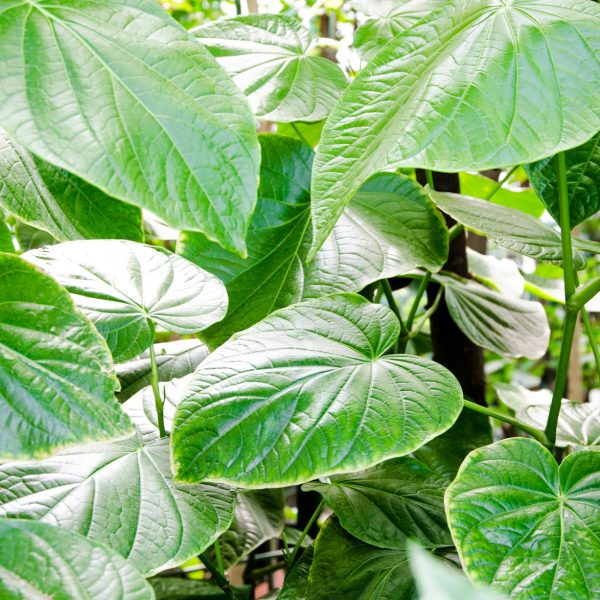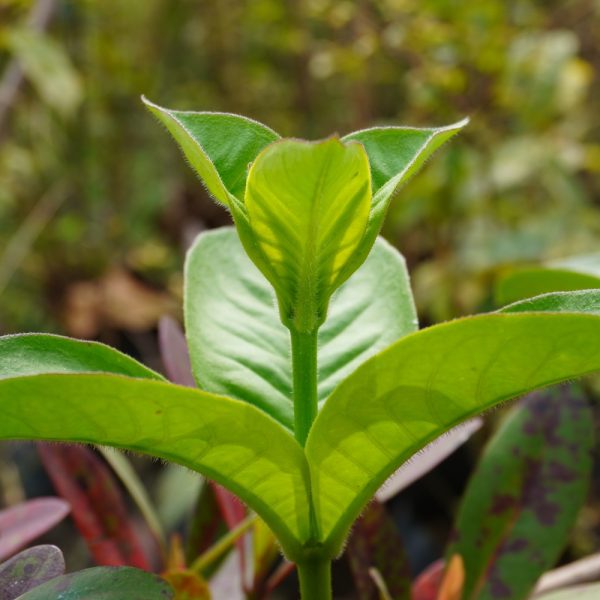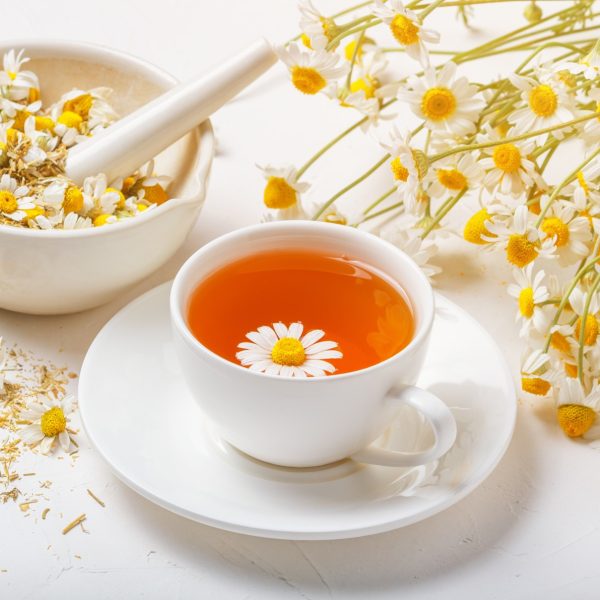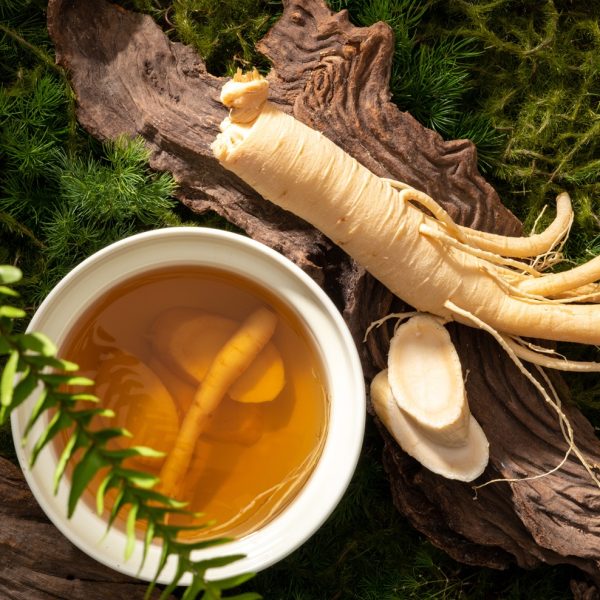-
How does it feel?
Saffron increases one’s sense of physical and psychological wellbeing. When the circulation and blood quality is improved, increased energy and nutrition is delivered to the cells, enhancing the health status and function in all of the systems of the body.
Saffron is mildly bitter, with a sweet and warming energy. In Ayurveda, saffron treats conditions of excess Vata (in simple terms, vata, is the humour of air and space that creates dry and cold conditions). A Sattvic herb; whose actions on the blood bring about feelings love and compassion.
-
What can I use it for?
 Saffron is one of the more expensive herbs in the Materia Medica, so may not be the best ‘go-to’ for acute conditions where a more accessible option could be available. However, it presents a unique balance of properties that can make it a desirable herb of choice to support during times of emotional fragility.
Saffron is one of the more expensive herbs in the Materia Medica, so may not be the best ‘go-to’ for acute conditions where a more accessible option could be available. However, it presents a unique balance of properties that can make it a desirable herb of choice to support during times of emotional fragility.Saffron supports the nervous system, which includes the peripheral nerves and the brain.
It can be helpful to use where issues in the menstrual cycle present with symptoms of menstrual pain, headaches and low mood due to its antidepressant, mood elevating properties.
It can also be a herb of choice incorporated into culinary recipes for digestive support or to increase assimilation and absorption of nutrients from the diet.
-
Into the heart of saffron
 Energetically, saffron gives a glow of love and warmth. Like any herb that supports the circulation and the nervous system, saffron increases mental wellbeing by nourishing the nerves and increasing the movement of blood and energy in the tissues.
Energetically, saffron gives a glow of love and warmth. Like any herb that supports the circulation and the nervous system, saffron increases mental wellbeing by nourishing the nerves and increasing the movement of blood and energy in the tissues.In Ayurveda, saffron is described as Sattvic (a quality of lovingness and compassion, reflected in nature), giving the nurturing energy of love. It would therefore be indicated for those experiencing grief or other emotional pain, possibly accompanied by a depressed emotional state.
Saffron supports and uplifts with its gentle nurturing energy, whilst supporting the physical systems most effected by this condition.
Described as one of the best aphrodisiac herbs, saffron improves libido, raises feelings of love and sensuality. Saffron improves the circulation to the reproductive organs making it a wonderful tonic herb for both men and women.
-
Traditional uses
 The use of saffron in treatment of mood disorders such as depression has a long tradition, ranging from antiquity to modern times. It is long believed that Saffron may have a modulating effect on certain chemicals in the brain, including serotonin which is fundamental for good mental health (8).
The use of saffron in treatment of mood disorders such as depression has a long tradition, ranging from antiquity to modern times. It is long believed that Saffron may have a modulating effect on certain chemicals in the brain, including serotonin which is fundamental for good mental health (8).Saffron has also a long standing history of use for digestive issues, with its carminative action and ability to support digestion (9).
Traditionally Saffron was indicated for treatment of measles, as a diaphoretic herb (a herb that induces sweating) (9). It may have been used to support the important immunological process of a viral fever. It was also traditionally used in the prevention of complications associated with the pox’s (smallpox and chickenpox) such as retrocession of the classic rash that in some cases infects the nerves and visceral organs, rather than coming out through the skin. One of the old treatments for this was saffron as a circulatory stimulant. It was believed to help bring out the rash and protect the nerves (10).
-
Traditional actions
Herbal actions describe therapeutic changes that occur in the body in response to taking a herb. These actions are used to express how a herb physiologically influences cells, tissues, organs or systems. Clinical observations are traditionally what have defined these actions: an increase in urine output, diuretic; improved wound healing, vulnerary; or a reduction in fever, antipyretic. These descriptors too have become a means to group herbs by their effects on the body — herbs with a nervine action have become the nervines, herbs with a bitter action are the bitters. Recognising herbs as members of these groups provides a preliminary familiarity with their mechanisms from which to then develop an understanding of their affinities and nuance and discern their clinical significance.
-
Traditional energetic actions
Herbal energetics are the descriptions Herbalists have given to plants, mushrooms, lichens, foods, and some minerals based on the direct experience of how they taste, feel, and work in the body. All traditional health systems use these principles to explain how the environment we live in and absorb, impacts our health. Find out more about traditional energetic actions in our article “An introduction to herbal energetics“.
Western energetics
Ayurvedic energetics
-
What practitioners say
 In creating a balanced prescription of multiple herbs, a herbalist will often use an aromatic herb to harmonise a blend. Aromatic herbs, such as Saffron, increase the digestive fire, improving assimilation and absorption of nutrients and medicinal compounds whilst assisting to deliver them to the tissues that need them.
In creating a balanced prescription of multiple herbs, a herbalist will often use an aromatic herb to harmonise a blend. Aromatic herbs, such as Saffron, increase the digestive fire, improving assimilation and absorption of nutrients and medicinal compounds whilst assisting to deliver them to the tissues that need them.Aromatic herbs are also often nervine (nourishing or benefitting the nervous system) and as they often have a pleasing taste, they tend to tie herbal formulations together. This adds a final harmonizing note to a prescription, forging the unique quality of herbal medicines that they can engage all the senses of the patient.
As an expensive but also extremely potent herb, saffron will most often be used in subtle or lower quantities as part of a prescription.
Saffron is used by Western herbalists to treat a number of conditions associated with the nervous and cardiovascular systems, as well as to support those suffering with depression.
Like other herbs that contain high levels of volatile oils (aromatic compounds), saffron is described in Ayurvedic tradition as a herb that is supportive for the digestive fire. As with many aromatic plants, saffron will offer increased digestive function, also improving the assimilation of nutrients from the diet (1,2).
It is indicated where general tissue state is diminished, in conditions whose characteristics are dry and cold. In terms of tissue types that saffron supports, this would be epithelial and nervous tissue specifically.
A classic presentation for this dry and cold pattern of illness would present with pallid complexion, heightened sense of coldness, slow movement, decreased intensity of sensation. Fatigue and difficulty thinking clearly. Pale tongue or bluish and slow pulse. Achy, dull pain that feels better with heat or warming herbs. Food stagnation, flatulence, bloating and belching may occur as a result of reduced digestive fire. The underlying cold would need to be treated with warming, stimulating herbs such as saffron.
It is thought to be one of the best herbs for liver – spleen regulation, and for generally supporting metabolism. A herb that supports the actions of other herbs through increased assimilation and movement into the tissues of the body (1).
In the Traditional Western practice, in order to identify the status of tissue health (namely epithelial tissue/ mucous membranes – that which lines the inner surface of most internal organs and orifices) a herbalist will visually observe the tongue, inner eyelids combined with an in depth analysis of physical health under consultation. Observing the overall tissue state of the person as well as any local and obvious anomalies can greatly enhance a herbalist’s ability to identify the nature of an ailment and treatment approaches. Saffron would be best applied where there is atrophy or weakness in the tissues of the nervous system or where the epithelial tissue is under stimulated and cellular health is diminished.
-
Research
 Type 2 diabetes
Type 2 diabetesDiabetes is characterized by high blood sugar, which can lead to chronic damage to the heart, nerves and blood vessels. Research shows that saffron can reduce diabetic complications, for example it can reduce fasting plasma glucose levels and can significantly reduce waist circumference (15).
Depression
In a double-blind, placebo-controlled, single-centre and randomized trial, patients were randomly assigned to receive a capsule of dried saffron 30 mg a day or a placebo capsule for the duration of a 6-week study. At 6 weeks, Crocus sativus produced a significantly better outcome on the Hamilton depression rating scale than the placebo. The results of this study indicate the efficacy of Crocus sativus in the treatment of mild to moderate depression (12).
In another double-blind, single-centre trial and randomized trial, patients were randomly assigned to receive capsules of saffron 30 mg/day (BD) and capsule of fluoxetine (an antidepressant of the selective serotonin reuptake inhibitor (SSRI) class) at 20 mg/day for a 6-week study. At this dose, Saffron was found to be almost equally as effective as fluoxetine in the treatment of mild to moderate depression. The results of this study indicate the efficacy of Crocus sativus in the treatment of mild to moderate depression. Saffron effects serotonin levels, and so this is one of the ways it can affect mood. The aqueous extract of saffron increases brain dopamine, as well as glutamate concentrations (17).
Nervous system
A nourishing nervine herb, saffron has a direct action upon the nervous system. This can be applied as part of a supportive approach for conditions of the mind, such as anxiety, depression and nervous debility. It is a plant that has uplifting and mood enhancing qualities (1,11,12).
Because saffron improves blood flow to the brain and peripheral nerves, saffron is also indicated for degenerative and debilitating diseases associated with the nervous system such as Alzheimer’s and dementia (18,19). 2 separate clinical trials were conducted on patients with mild to moderate Alzheimer’s disease (18,19). The efficacy of treatment was evaluated using the AD Assessment Scale and cognitive subscale, as well as the Clinical Dementia Rating Scale. The research shows that saffron produced a significantly superior outcome on cognitive function when compared to placebo. The effectiveness of improving cognition was equal to that of the pharmaceutical donepezil. Both decreased the score in Clinical Dementia Rating Scale by 0.7-0.8, and the Alzheimer’s Disease Assessment Scale by 3.7 (18,19).
In Ayurveda, saffron is also used to treat headaches, such as tension headaches likely ones caused by stress and anxiety this is due to saffrons ability to support and nourish the nervous system and to improve cerebral circulation increasing circulation of blood in the brain and improving the health of the micro-capilliaries (2). It is important to seek professional advice for ongoing headaches to gain understanding of the root cause, as well as to ensure the correct course of treatment.
Cardiovascular
In another trial 50mg of saffron was dissolved in 100ml of milk and administered twice a day to 20 people of which 10 of them had heart disease. There was a consistent reduction in lipoprotein oxidation susceptibility observed after 3 and 6 weeks. This is good because lipid oxidation promotes premature coronary atherosclerosis and is also implicated in other cardiovascular disorders. This is potentially due to the antioxidant effect of saffron (16).
Science has shown that saffron has hypotensive, anti-ischemic, anti-platelet aggregation, anti-atherosclerotic, antioxidant, anti-diabetic and hypolipidemic effects which is why this plant can be considered as a potential treatment for cardiovascular health or a valuable part of a more complex formulation (15).
Alzheimers
2 separate clinical trials were conducted on patients with mild to moderate Alzheimer’s disease. The efficacy of treatment was evaluated using the AD Assessment Scale and cognitive subscale, as well as the Clinical Dementia Rating Scale. The research shows that saffron produced a significantly superior outcome on cognitive function when compared to placebo. The effectiveness of improving cognition was equal to that of the pharmaceutical donepezil. Both decreased the score in Clinical Dementia Rating Scale by 0.7-0.8, and the Alzheimer’s Disease Assessment Scale by 3.7.
Premenstrual syndrome
A study showed that administration of 15mg twice a day saffron capsules, for 2 menstrual cycles helped reduce depression score on the Hamilton Depression Rating Scale. The saffron extract also reduced menstruation symptoms when compared to placebo.
Serotonin, or 5-hydroxytryptamine, is a mood-elevating neurotransmitter synthesized from tryptophan (an amino acid). Serotonin plays a key role in such body functions as mood, sleep, digestion, nausea, wound healing, bone health, blood clotting and sexual desire.
Hormones and gynaecology
Saffron is indicated for a number of gynaecological conditions associated with blood deficiency. Specifically used to bring on a delayed menstruation or in dysmenorrhea (severe menstrual cramps and pain). Saffron improves tissue health in the female reproductive system, due to its ability to improve blood flow to the reproductive organs. Saffron is sometimes used in Ayurvedic medicine as part of an approach for treating fertility issues. Particularly those caused by depressed tissue states (dry and cold condition of the epithelium- mucous membranes of the reproductive system, which is sometimes rooted in nutritional deficiency or poor circulation, for both of which saffron can be supportive). It is important to seek professional advice for fertility issues to gain understanding of the root cause and as well as to ensure the correct course of treatment. Herbal medicine can be very supportive for fertility issues as shown by our case studies.
A well known aphrodisiac, Saffron promotes tissue growth and circulation to the reproductive organs, improving virility, libido and sexual function in both men and women (1,2).
A study showed that administration of 15mg twice a day saffron capsules, for 2 menstrual cycles helped reduce depression score on the Hamilton Depression Rating Scale. The saffron extract also reduced menstruation symptoms when compared to placebo (20).
Serotonin, or 5-hydroxytryptamine, is a mood-elevating neurotransmitter synthesized from tryptophan (an amino acid). Serotonin plays a key role in such body functions as mood, sleep, digestion, nausea, wound healing, bone health, blood clotting and sexual desire.
Immune system
Saffron contains numerous antioxidant compounds, suggesting that it may be useful in an adjunctive approach to improve cellular health. There is some promising research into the application of saffron as a chemoprotective (5,6). A chemoprotective is a herb or medicine that can be used to protect healthy tissue from the side effects of certain anticancer drugs. Studies have shown saffron has potential antioxidant, antimutagenic, tumoricidal, antigenotoxic properties. There has been much research around saffron for many different kinds of cancer including skin, colorectal, liver and many more. However much of the research has been conducted on cells and animals. Therefore, more investigations need to be conducted to see if saffron can be useful with cancer as an adjunctive treatment. Plants can be not only potentially valuable for direct cancer treatment, but also for alleviating the side effects of conventional treatment (14).
Saffron is a rich source of carotenoids making it a potent cell oxygenator. These carotenoids have been shown to increase the supply of oxygen in the blood cells (6). This can support optimal function of immune cells, as low oxygen levels have been shown to impede immune function. Generally better oxygenation benefits all cells in the body.
-
Did you know?
It takes around 160 flowers to produce 1g of saffron.
Additional information
-
Botanical description
An autumn-flowering perennial, saffron has been in cultivation and use for more than 3,500 years across many cultures, continents, and civilisations. Saffron has a corm (otherwise described as a bulbo-tuber- likened to both a bulb and a tuber), from which grows the leaves, bracts, bracteole, and a single flowering stalk. C. sativus generally blooms with a single beautiful deep purple flower in the autumn, from which 3 red / orange stigma grow, these are what makes up the well loved spice used in herbal medicine and eastern cuisine today. The whole plant grows up to around 10 to 30 cm high.
As a result of selective breeding Crocus sativus species is sterile, meaning that it is unable to reproduce. Therefore this species does not grow in the wild. The plant’s genetic fault is thought to have been caused by a hybridisation with an earlier form of this plant, C. Cartwrightianus, which native to Greece, yet this is not fully understood.
-
Common names
- Saffron
- Kesar (Hindi)
- Autumn crocus
-
Interactions
Blood Pressure Medications: Saffron may interact with both Hypotensive and Hypertensive medications. Monitor your blood pressure closely.
Caffeine: Saffron may decrease how quickly the body breaks down caffeine. Taking Saffron with caffeine may increase its effects in some people.
Diabetes medications: Saffron may lower blood sugar levels. Taking Saffron along with diabetes medicines might cause blood sugar to drop too low. Monitor your blood sugar closely.
Sedatives: Saffron might cause sleepiness and slowed breathing, saffron may enhance the effects of sedative medications.
-
Contraindications
Contraindicated in pregnancy, due to the increase of blood flow to the uterus.
-
Preparations
- Decocted milk
- Tincture
- Dried herb
-
Dosage
100-250mg per day (1-5 strands)
-
Plant parts used
The dried stigmata (female part) of Saffron flower
-
Constituents
Based on chemical analyses saffron extracts, carotenoids, namely crocin and crocetin and the monoterpene aldehydes – picrocrocin and safranal are the most important active carotenoid compounds. The actual taste of saffron is derived primarily from picrocrocin. Other active compounds identified in saffron are as follows:
- Over 150 volatile, non-volatile and aroma-yielding compounds.
- Lipophilic and hydrophilic carbohydrates
- Proteins
- Amino acids
- Minerals
- Musilage
- B Vitamins (especially riboflavin and thiamine)
- Pigments including crocin, anthocianin, carotenoids, lycopene, zigzantin
- Flavonoids

-
Recipe
Saffron is best extracted in warm milk. Best taken raw – not boiled and in low doses along with other herbs.
A traditional aphrodisiac Ayurvedic recipe combines Shatavari, ashwagandha and kapikacchu in milk or plant based milk, gently warmed, adding saffron after the milk taken off the heat. The decoction is then strained.
-
References
- Frawley, D. and Vasant Lad (2016). The yoga of herbs: an Ayurvedic guide to herbal medicine. Delhi: Motilal Banarsidass.
- Pole, S. (2013). Ayurvedic medicine: the principles of traditional practice. London; Philadelphia: Singing Dragon, Cop.
- Vishṇū Mahādeva Gogaṭe (2012). Ayurvedic Pharmacology & Therapeutic Uses of Medicinal Plants: Dravyagunavignyan. New Delhi: Chaukhambha Publications.
- Prakash Paranjpe (2003). Ayurvedic medicine: the living tradition; a guide to Ayurvedic generic formulations. Delhi: Chaukhamba Sanskrit Pratishthan.
- Samarghandian, S. and Borji, A. (2014). Anticarcinogenic effect of saffron (Crocus sativus L.) and its ingredients. Pharmacognosy Research, 6(2), p.99. doi:10.4103/0974-8490.128963.
- Yance, D.R. and Valentine, A. (1999). Herbal medicine, healing & cancer: a comprehensive program for prevention and treatment. Los Angeles, Calif.: Keats Publishing.
- Mzabri, Addi and Berrichi (2019). Traditional and Modern Uses of Saffron (Crocus Sativus). Cosmetics, 6(4), p.63. doi:10.3390/cosmetics6040063.
- Grieve, M. and C Leyel (1931). A modern herbal: the medicinal, culinary, cosmetic and economic properties, cultivation and folk-lore of herbs, grasses, fungi, shrubs & trees with all their modern scientific uses. Volume 1 (A-H). United States: Stone Basin.
- Wood, M. (2004). The practice of traditional western herbalism: basic doctrine, energetics, and classification. Berkeley, Calif.: North Atlantic Books, Cop.
- www.cmaconweb.org. (n.d.). Chinese Medicine and Culture : Login. [online] Available at: https://www.cmaconweb.org/citation.asp?issn=2589-9627 [Accessed 5 May 2022].
- Akhondzadeh, S., Tahmacebi-Pour, N., Noorbala, A.-A., Amini, H., Fallah-Pour, H., Jamshidi, A.-H. and Khani, M. (2005). Crocus sativus L. in the treatment of mild to moderate depression: a double-blind, randomized and placebo-controlled trial. Phytotherapy Research, 19(2), pp.148–151. doi:10.1002/ptr.1647.
- Noorbala, A.A., Akhondzadeh, S., Tahmacebi-Pour, N. and Jamshidi, A.H. (2005). Hydro-alcoholic extract of Crocus sativus L. versus fluoxetine in the treatment of mild to moderate depression: a double-blind, randomized pilot trial. Journal of Ethnopharmacology, 97(2), pp.281–284. doi:10.1016/j.jep.2004.11.004.
- Samarghandian S, Borji A. Anticarcinogenic effect of saffron (Crocus sativus L.) and its ingredients. Pharmacognosy Research. 2014;6(2):99. doi:10.4103/0974-8490.128963
- Rahmani J, Bazmi E, Clark C, Hashemi Nazari S. The effect of Saffron supplementation on waist circumference, HA1C, and glucose metabolism: A systematic review and meta-analysis of randomized clinical trials. Complement Ther Med. 2020;49:102298. doi:10.1016/j.ctim.2020.102298
- Verma SK, Bordia A. Antioxidant property of Saffron in man. Indian Journal of Medical Sciences. 1998;52(5):205-207. Accessed February 18, 2021. https://pubmed.ncbi.nlm.nih.gov/9808914/
- Shams J, Hedayati M, Asefi F, Sahraei H. P.2.b.001 Water extract of saffron (Crocus sativus) increases brain dopamine and glutamate concentration in the rat. European Neuropsychopharmacology. 2010;20:S353-S354. doi:10.1016/s0924-977x(10)70491-0
- Akhondzadeh S, Sabet MS, Harirchian MH, et al. Saffron in the treatment of patients with mild to moderate Alzheimer’s disease: a 16-week, randomized and placebo-controlled trial. Journal of Clinical Pharmacy and Therapeutics. 2010;35(5):581-588. doi:10.1111/j.1365-2710.2009.01133.x
- Akhondzadeh S, Shafiee Sabet M, Harirchian MH, et al. A 22-week, multicenter, randomized, double-blind controlled trial of Crocus sativus in the treatment of mild-to-moderate Alzheimer’s disease. Psychopharmacology. 2010;207(4):637-643. doi:10.1007/s00213-009-1706-1
- Agha-Hosseini M, Kashani L, Aleyaseen A, et al. Crocus sativus L. (saffron) in the treatment of premenstrual syndrome: a double-blind, randomised and placebo-controlled trial. BJOG: an international journal of obstetrics and gynaecology. 2008;115(4):515-519. doi:10.1111/j.1471-0528.2007.01652.x



























 Saffron is one of the more expensive herbs in the Materia Medica, so may not be the best ‘go-to’ for acute conditions where a more accessible option could be available. However, it presents a unique balance of properties that can make it a desirable herb of choice to support during times of emotional fragility.
Saffron is one of the more expensive herbs in the Materia Medica, so may not be the best ‘go-to’ for acute conditions where a more accessible option could be available. However, it presents a unique balance of properties that can make it a desirable herb of choice to support during times of emotional fragility. Energetically, saffron gives a glow of love and warmth. Like any herb that supports the circulation and the nervous system, saffron increases mental wellbeing by nourishing the nerves and increasing the movement of blood and energy in the tissues.
Energetically, saffron gives a glow of love and warmth. Like any herb that supports the circulation and the nervous system, saffron increases mental wellbeing by nourishing the nerves and increasing the movement of blood and energy in the tissues. The use of saffron in treatment of mood disorders such as depression has a long tradition, ranging from antiquity to modern times. It is long believed that Saffron may have a modulating effect on certain chemicals in the brain, including serotonin which is fundamental for good mental health (8).
The use of saffron in treatment of mood disorders such as depression has a long tradition, ranging from antiquity to modern times. It is long believed that Saffron may have a modulating effect on certain chemicals in the brain, including serotonin which is fundamental for good mental health (8). In creating a balanced prescription of multiple herbs, a herbalist will often use an aromatic herb to harmonise a blend. Aromatic herbs, such as Saffron, increase the digestive fire, improving assimilation and absorption of nutrients and medicinal compounds whilst assisting to deliver them to the tissues that need them.
In creating a balanced prescription of multiple herbs, a herbalist will often use an aromatic herb to harmonise a blend. Aromatic herbs, such as Saffron, increase the digestive fire, improving assimilation and absorption of nutrients and medicinal compounds whilst assisting to deliver them to the tissues that need them. Type 2 diabetes
Type 2 diabetes





